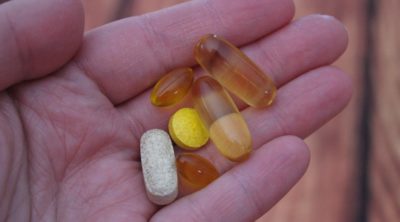
As a part of most comprehensive first aid kits, occlusive dressings are important for treating wounds and trauma in the chest and abdominal regions. In this article, we will study about this dressing, its types, and correct usage.
Did You Know?The first recorded use of an occlusive dressing was approximately during 1600 B.C. Until then, most healers and physicians preferred to leave the wound open, with periodic additions of herbs and poultices for healing purposes. |
The medical definition of occlusive dressing is ‘a dressing that prevents air from reaching a wound or lesion, and one that retains moisture, heat, body fluids, and medication. It may consist of a sheet of thin plastic affixed with transparent tape’. Occlusive dressings are medical dressings which shield wounds from air and fluids. They are also resistant to microbes such as viruses and bacteria.
These dressings give a nearly complete seal. They are usually used in hospitals and clinics, and need to be administered by a health care professional, such as a nurse, doctor, or medical technician. One can usually find these dressings in flat large sheets, which have to be cut according to the size of the wound, and sealed with adhesive tape. Patients with minor injuries can also use such dressings by themselves by following the guidelines provided by a doctor.
Types of Occlusive Dressing
- Hydro-colloid Dressing: This type contains gel-forming agents attached to polyurethane foam, to create a waterproof, absorbent, adhesive pad. These pads absorb any fluids exuded by the wound and forms a gel. These dressings are best used for clean, superficial wounds, with low to medium fluid output.
- Hydro-gel Dressing: These are transparent membranes made of polyethylene that is composed primarily of water. While non-occlusive dressings, such as gauze, allow air and moisture to move through, hydro-gels are semi-occlusive dressings that don’t allow any contaminants to enter. However, they are highly absorbent. Therefore, they are mainly used on wounds with high amounts of fluids, such as second-degree burns and deeper abrasions. The disadvantages are that hydro-gels have to be replaced and examined for infections frequently.
- Semipermeable Films: These are bio-occlusive dressings, which are made of polyurethane or polyethylene. Due to their transparent nature, one can examine the wound without the need of removing the dressing. These dressings allow vapor to move through due to their semipermeable nature. These are best used in superficial wounds, blisters, minor burns. However, since they are non-absorbent, they should not be used for wounds which exude a lot of fluids.
Applications
Sealing and Securing Chest Tube Sites: Normally, while a person is recovering from a chest wound, which may have penetrated the lungs, chest tubes are used to facilitate safe respiration. After the recovery process, an occlusive dressing is used to seal the site when the tube is removed following a chest drain, i.e., restoration of negative pressure in thoracic cavity. However, it is important that one uses an occlusive dressing on a chest tube site only if the lung tissue/visceral pleura is intact. If there is any damage, adding this type of dressing can lead to tension pneumothorax (collapsed lung), a sensitive situation. In such cases, it is best to use a sterile non-porous dressing, which has been secured in place by tape on three sides. This will allow the air from the site to be expelled when breathing out, but stop the air from getting sucked inside while breathing in.
Dressing for Burns: The combination of biological or synthetic absorptive occlusive dressings with some topical creams can be used to treat second-degree superficial burns. This increases the speed of healing in the affected area. This occurs due to the creation of a moist area, which encourages the rebuilding process of skin cells. These dressings also do not damage new skin cells during dressing changes, reduces pain, and gives a cosmetically better outcome. However, there is a risk of infection and poor drainage of waste fluids in the region, due to the usage of such dressings, which have to be monitored regularly.
Testing for Allergies: Research on suspected allergens is done by putting these allergens in the wound and sealing it with an occlusive dressing, which protects the site from external influences, while keeping the suspected allergen in constant contact with the wound. This allows researchers to maintain a controlled testing environment.
While occlusive dressings seem to be very effective for a variety of applications, research is not completely positive about these treatments, as animal testing shows some signs of increase in infection. Therefore, it is highly important that a patient’s physiological and systemic conditions, along with the size and severity of the wound are checked completely before using occlusive wounds.
Disclaimer: The information provided in this article is solely for educating the reader. It is not intended to be a substitute for the advice of a medical expert.


